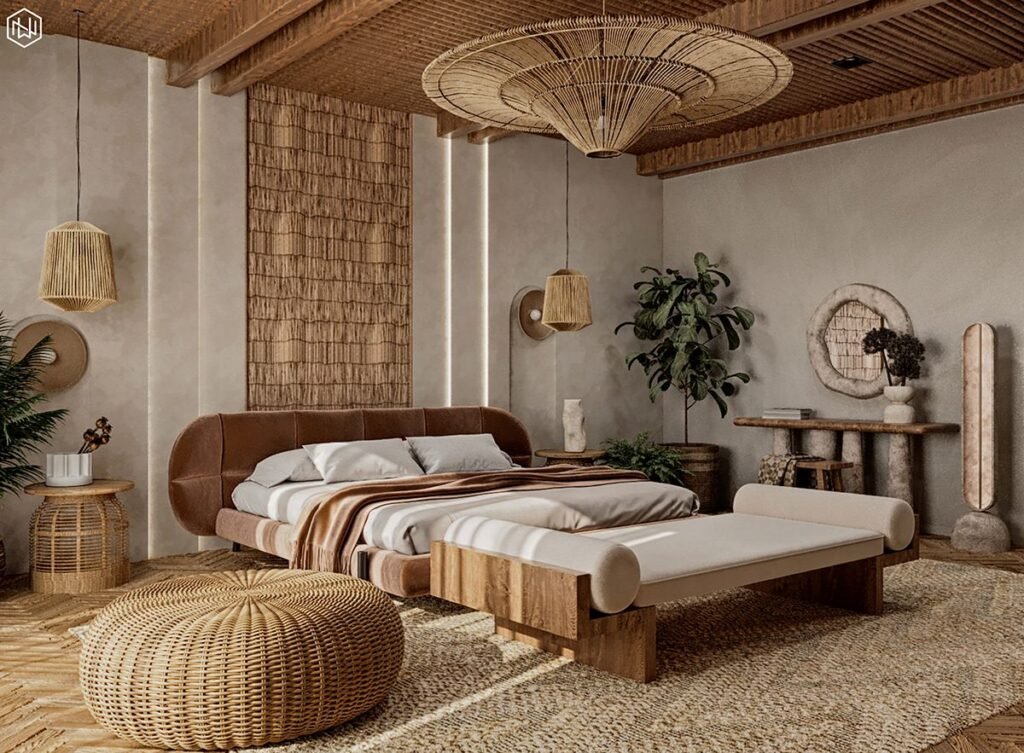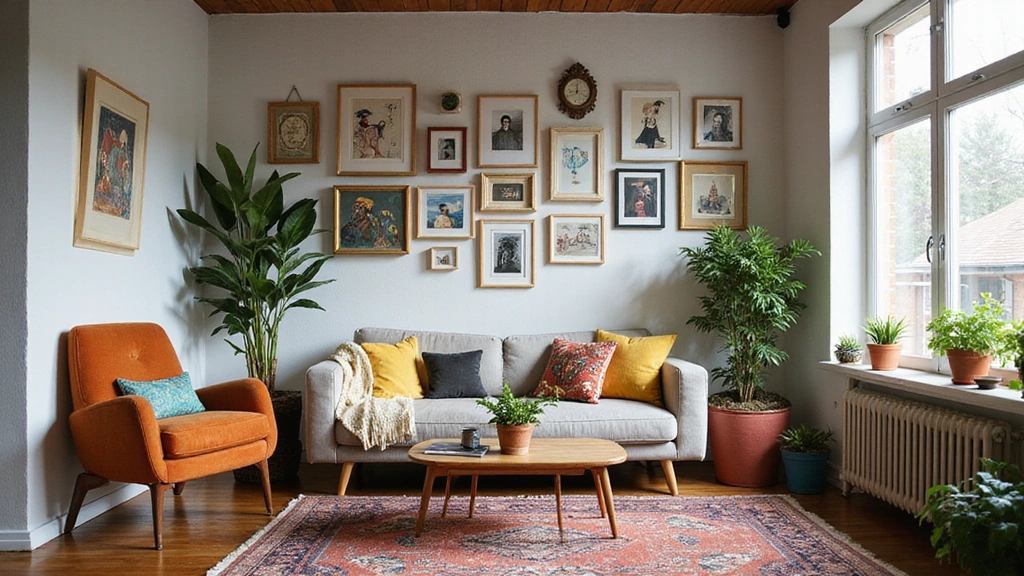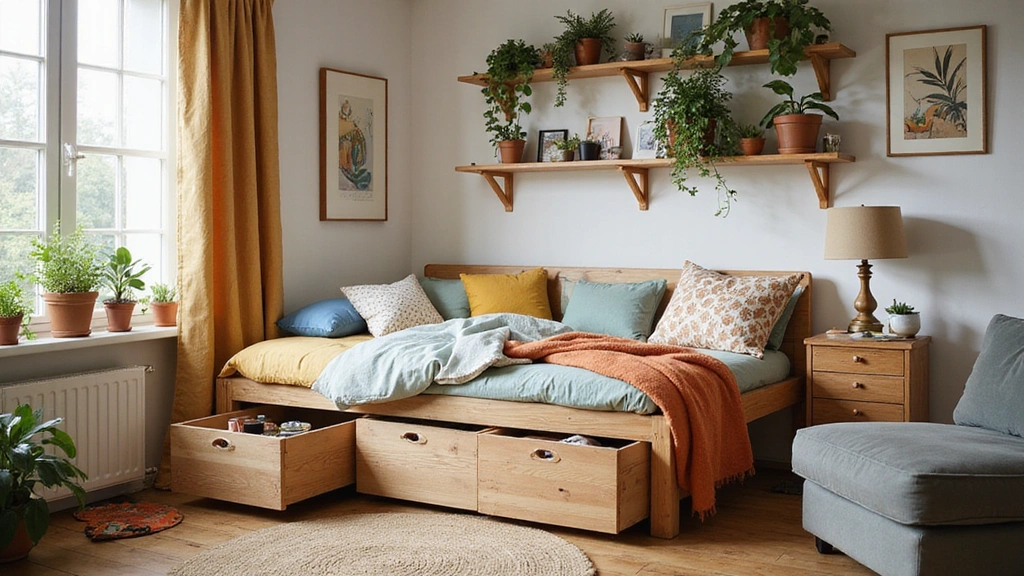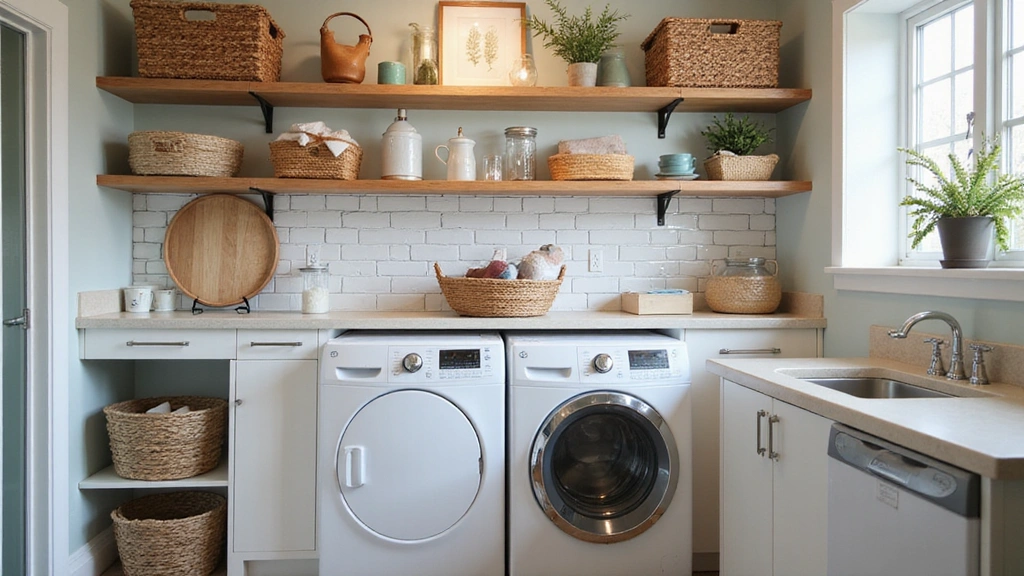Wabi Sabi is more than just a design trend; it’s a philosophy that celebrates the beauty of imperfection and the transience of life. This unique approach to interior design finds joy in the natural, the aged, and the raw, creating spaces that feel both stylish and authentic. Imagine stepping into a room where every piece tells a story, where the textures are inviting, and the colors are harmoniously muted.
Insider Tips for Wabi Sabi Interior Design
Imagine your home transformed into a serene, soulful sanctuary, where wabi sabi’s embrace of imperfection and natural beauty creates a calming, authentic vibe. These budget-friendly ideas will infuse your space with wabi sabi charm, perfect for any room, blending simplicity with timeless elegance.
- Weathered Wood Furniture: Choose a distressed wooden table or chair with visible grain for rustic, imperfect charm. It’s like your home’s telling a story of natural history.
- Handmade Ceramic Vases: Display slightly irregular, hand-thrown pottery in earthy tones for tactile, organic appeal. It feels like your space is embracing artisanal authenticity.
- Linen or Cotton Textiles: Use slightly wrinkled linen curtains or throws to add soft, lived-in texture. It’s like your room’s wrapped in cozy, unpolished warmth.
- Natural Stone Accents: Incorporate a rough-hewn stone tray or coasters for understated, earthy elegance. It’s like your decor’s grounded in nature’s imperfections.
- Dried Branch Decor: Arrange dried branches or reeds in a simple vase for a minimalist, organic focal point. It feels like your home’s whispering nature’s beauty.
- Faded Wall Finishes: Apply a textured, matte plaster or clay paint in muted tones for a weathered, soulful backdrop. It’s like your walls are aging with graceful charm.
- Woven Jute Rugs: Lay a handwoven jute rug with subtle irregularities to anchor the space with natural, imperfect texture. It’s like your floor’s weaving a tale of simplicity.
In this blog, we’ll explore 19 breathtaking ideas that capture the essence of Wabi Sabi, encouraging you to embrace simplicity and find beauty in the imperfect. Whether you’re looking to redesign your living space or simply add a touch of Wabi Sabi charm, these ideas will inspire you to create a sanctuary that reflects your unique personality and connection to nature.
1. Nature-Inspired Living Spaces
Image Credit: justbeve
Imagine a cozy living area that seamlessly blends indoor comfort with the beauty of the outdoors. Large windows framed by natural wood allow sunlight to spill in, illuminating organic elements like a reclaimed wood coffee table or a few ceramic vases filled with wildflowers. The textures of a soft, woven rug underfoot and the raw edges of a rustic table create a harmonious atmosphere.
To achieve this look:
– Use natural materials like wood, stone, and clay.
– Integrate greenery by adding potted plants or fresh flowers.
– Choose colors that mimic nature, such as earthy browns and soft greens.
This design not only creates a visually appealing space but also fosters a sense of tranquility and connection to nature, essential elements in Wabi Sabi interior design.
2. Minimalist Charm with a Cozy Feel
Image Credit: fedorovne1
In Wabi Sabi, less is often more. A minimalist lounge area can still feel inviting and warm. Think of a soft, cream-colored sofa adorned with an array of textured cushions in muted tones. The simplicity of a round wooden coffee table, perhaps with a chipped corner, paired with a delicate woven rug creates a warm and inviting space.
Key tips for this aesthetic:
– Keep decor minimal, focusing on quality over quantity.
– Incorporate soft lighting through lamps or candles to enhance warmth.
– Use soft, natural fabrics like linen and cotton for textiles.
This approach not only emphasizes simplicity but also allows each piece to shine, making the space feel both stylish and authentic.
3. Embracing Textures
Image Credit: theinteriordesigninstitute
Wabi Sabi thrives on the beauty of textures. Imagine a space where a rough-hewn wooden beam contrasts with soft, plush cushions. Textures can tell stories, evoke emotions, and create a tactile experience that draws people in. Layering different materials—think a chunky knit blanket on a linen sofa or a rattan chair beside a smooth stone table—adds depth and interest to your decor.
To integrate this into your home:
– Mix and match different materials in your decor.
– Use handmade items that showcase imperfections, such as a hand-thrown pottery piece.
– Create focal points with textured wall art or woven wall hangings.
This attention to texture enhances the sensory experience of your space while staying true to the Wabi Sabi aesthetic.
Embrace the art of layering! In wabi sabi interior design, mixing textures like rough wood and soft fabrics invites warmth and depth into your space. It’s all about telling your story through the materials you choose.
4. The Beauty of Imperfection
Image Credit: thepineconecottage
In Wabi Sabi, imperfections are celebrated rather than shunned. A cracked ceramic vase, a hand-carved wooden piece, or a vintage item with a history adds character to your home. Incorporating such elements invites guests to appreciate the story behind each piece.
How to showcase imperfection:
– Opt for vintage or thrifted items that carry history.
– Embrace handmade decor that showcases the artisan’s touch.
– Allow for asymmetry in your arrangements, creating a more organic feel.
By valuing the beauty of imperfections, you create a space that feels authentic and lived-in, inviting warmth and connection.
5. Soft and Muted Color Palettes
Image Credit: hermiig
Wabi Sabi design often embraces soft, muted colors that evoke a sense of calm and balance. Shades of beige, soft greens, and gentle browns can create a serene atmosphere, enhancing the overall feeling of tranquility in your home. Imagine a room painted in a warm taupe, accented by decor in subtle earth tones that blend harmoniously together.
To create a soothing color scheme:
– Choose natural paint colors that reflect the hues found in nature.
– Layer different shades of the same color for depth and interest.
– Use textiles in soft colors to create a cohesive look throughout the space.
This approach not only aligns with Wabi Sabi principles but also allows for an inviting and peaceful home environment.
6. Incorporating Natural Elements
Image Credit: ramoslucasvv
Bringing the outside in is a key aspect of Wabi Sabi. This can be achieved by incorporating natural elements like wood, stone, and plants into your decor. Think of a living room with a stone fireplace or a kitchen featuring wooden cabinets that showcase the wood’s natural grain.
Here’s how to incorporate natural elements:
– Use large potted plants or hanging greenery to soften hard surfaces.
– Consider natural stone for countertops or flooring, adding a tactile quality.
– Display natural wood furniture that highlights its unique patterns.
These touches not only enhance the beauty of your home but also ground it in nature, fostering a connection to the earth.
7. Thoughtful Lighting
Image Credit: withloveem3
Lighting plays a crucial role in creating a Wabi Sabi atmosphere. Soft, diffused lighting can create a warm and inviting space, perfect for relaxation and reflection. Picture a cozy reading nook bathed in the gentle glow of a paper lantern or the flicker of candlelight.
To achieve effective lighting:
– Use a mix of ambient, task, and accent lighting to create layers.
– Opt for warm-toned bulbs to enhance the cozy atmosphere.
– Incorporate natural light through sheer curtains or strategically placed mirrors.
Thoughtful lighting enhances the overall mood of your space, making it feel welcoming and serene.
Soft, diffused lighting can turn any room into a sanctuary. Embrace the glow of warm bulbs and let natural light dance through sheer curtains – it’s the heart of Wabi Sabi interior design.
8. A Focus on Functionality
Image Credit: lindshinds
Wabi Sabi design is not just about aesthetics; it also prioritizes functionality. Think of furniture that serves a purpose while also looking beautiful, like a well-crafted bench that doubles as storage. This approach encourages a clutter-free environment, allowing for a sense of calm and order.
Tips for functional decor:
– Choose multi-functional furniture to maximize space.
– Keep surfaces relatively clear to promote a sense of peace.
– Invest in quality pieces that serve a purpose and bring joy.
By focusing on functionality, your space becomes not only beautiful but also practical and livable.
9. Art with Meaning
Image Credit: e3neven
Incorporating art that speaks to your values or experiences can add a personal touch to your home. Consider displaying a piece that resonates with you or represents a cherished memory. Whether it’s a handmade sculpture or a painting by a local artist, art can serve as a focal point in your decor.
To curate meaningful art:
– Support local artists or choose pieces that reflect your personality.
– Mix different styles and mediums for a more eclectic look.
– Create a gallery wall that tells a story or showcases your journey.
This approach allows your space to feel uniquely yours, filled with personal narratives and connections.
10. Warm and Inviting Textiles
Image Credit: BienvenuechezGinette
Textiles can transform a space from stark to cozy in an instant. Opt for warm fabrics like wool, linen, or cotton to drape over furniture or use as throws. Imagine a soft, knitted blanket casually tossed over a couch, inviting you to snuggle in.
Tips for using textiles:
– Layer various textures to add warmth and depth.
– Choose natural fabrics that enhance comfort and breathability.
– Use textiles to create zones within larger spaces, enhancing functionality.
This focus on textiles not only adds visual interest but also enhances the overall comfort of your home.
11. Indoor-Outdoor Flow
Image Credit: BienvenuechezGinette
Creating a seamless transition between indoor and outdoor spaces embodies the Wabi Sabi philosophy of connecting with nature. Imagine wide-open doors leading to a serene garden or a patio that invites you to lounge outside. This flow encourages a harmonious living experience.
To enhance indoor-outdoor flow:
– Use similar colors and materials inside and out for continuity.
– Incorporate large windows or glass doors to bring the outside in.
– Create outdoor living spaces that mirror your indoor decor.
This connection with nature not only enhances your living space but also promotes a sense of peace and well-being.
12. Vintage Finds and Flea Market Treasures
Image Credit: akakitsintsadze
Filling your home with vintage items adds character and a sense of history, key aspects of Wabi Sabi design. Think about incorporating a rustic wooden chair or a vintage lamp that showcases the beauty of age. These pieces can serve as conversation starters and focal points in your decor.
Tips for sourcing vintage finds:
– Visit local flea markets or antique shops for unique treasures.
– Look for items that show wear and tear to embrace their story.
– Mix vintage with modern elements for an eclectic look.
By curating a collection of vintage finds, you add depth and personality to your home, making it feel uniquely yours.
13. Organic Shapes and Forms
Image Credit: jisskastyling
In Wabi Sabi design, organic shapes take precedence over rigid lines and harsh angles. Think of furniture with soft curves or decor that mimics the natural forms found in nature. This approach fosters a sense of relaxation and harmony in your space.
To incorporate organic shapes:
– Choose furniture with rounded edges or asymmetrical designs.
– Use decor that reflects natural forms, like a vase shaped like a pebble.
– Arrange furniture and decor in a way that promotes flow and movement.
This focus on organic shapes creates a calming environment that resonates with the Wabi Sabi philosophy.
14. Incorporating Earthy Tones
Image Credit: fannyheart
Earthy tones create a warm and inviting atmosphere that is at the heart of Wabi Sabi interior design. Imagine a room filled with soft terracotta, sandy beige, and rich olive greens. These colors bring a grounding quality to your decor, making it feel cozy and welcoming.
How to use earthy tones effectively:
– Use a neutral palette as a base and layer in earthy accents.
– Combine different shades of brown and green for a soothing effect.
– Incorporate natural materials that reflect these colors, like wood or clay.
This color scheme enhances the overall serenity of your space, allowing it to feel both stylish and authentic.
Embrace the beauty of earthy tones in your home! A warm palette of terracotta, beige, and olive green can transform your space into a cozy retreat that feels both inviting and grounded.
15. The Art of Simplicity
Image Credit: edithchirapa
Simplicity is a core principle of Wabi Sabi. A clutter-free environment fosters clarity and peace of mind. Think of a clean countertop with just a few well-placed items, allowing each piece to shine. This approach encourages mindfulness and appreciation for the beauty of simplicity.
To embrace simplicity:
– Declutter regularly and keep only what you truly love.
– Choose decor with clean lines and minimal embellishments.
– Focus on creating a calm and serene atmosphere.
By prioritizing simplicity, you allow your home to become a sanctuary, free from distractions.
Simplicity is the ultimate sophistication. Embrace a clutter-free space to let your favorite pieces shine and cultivate a sense of peace in your home. Less truly is more in wabi sabi interior design!
16. Functional Decor
Image Credit: od9222
In Wabi Sabi, decor should serve a purpose while also being beautiful. Imagine a decorative bowl that holds your keys or a stylish basket that stores blankets. This functional approach allows you to keep your space tidy while highlighting your unique style.
Tips for functional decor:
– Look for items that serve dual purposes, like a beautiful tray that can organize items.
– Choose furniture that provides storage solutions without sacrificing style.
– Emphasize pieces that are both useful and visually appealing.
This balance of function and beauty creates a harmonious living environment where practicality meets style.
17. Emphasizing Open Spaces
Image Credit: byxouxo
Open spaces promote a sense of flow and freedom that aligns perfectly with Wabi Sabi principles. Think of a spacious living area filled with natural light and unobstructed views, allowing for easy movement and interaction. This design encourages a connection between different areas of your home.
To create open spaces:
– Use furniture that does not block pathways or sight lines.
– Incorporate sliding doors or open shelving to maintain visibility.
– Choose light colors and reflective surfaces to enhance the feeling of openness.
This emphasis on open spaces not only makes your home feel larger but also fosters a sense of community and connection.
18. Handcrafted Elements
Image Credit: s_sacchini
Handcrafted items bring an element of uniqueness to your decor, reflecting the skill and artistry of the maker. Imagine displaying a hand-thrown pottery piece or a woven basket that showcases intricate craftsmanship. These elements add character and support the idea of valuing handmade over mass-produced items.
To incorporate handcrafted elements:
– Seek out local artisans or craft fairs for unique finds.
– Mix handmade items with store-bought pieces for an eclectic look.
– Celebrate the imperfections that come with handmade goods.
This focus on craftsmanship enhances the authenticity of your home, making it feel truly special.
19. Mindful Living Areas
Image Credit: doragali
Creating spaces that promote mindfulness and relaxation is essential in Wabi Sabi design. Imagine a cozy corner where you can unwind with a book, featuring a comfortable chair, soft lighting, and calming decor. This intentional design encourages moments of peace and reflection in your daily life.
To create mindful living areas:
– Incorporate comfortable seating to invite relaxation.
– Use calming colors and soft textures to enhance comfort.
– Create a small altar or display with meaningful items to inspire mindfulness.
By designing spaces that encourage mindfulness, you make your home a refuge, promoting well-being and tranquility.
Frequently Asked Questions
Q: What is Wabi Sabi interior design and how can I incorporate it into my home?
A: Wabi Sabi is a beautiful philosophy that embraces imperfection and transience in design. To incorporate it into your home, focus on using natural materials, embracing muted color palettes, and celebrating unique, vintage finds.
Start by selecting a few handcrafted items or natural elements like wood and stone, and create a cozy, inviting atmosphere that reflects your personal style.
Q: Can Wabi Sabi design work in small spaces?
A: Absolutely! Wabi Sabi can be particularly effective in small spaces by promoting a sense of calm and simplicity. Use minimal furniture and focus on functional decor to avoid clutter. Choose soft, muted colors to create a serene environment.
Incorporating elements like plants and natural light can also enhance the feeling of space and connection to nature, making your small area feel open and inviting.
Q: What are some key elements of Wabi Sabi interior design?
A: Key elements of Wabi Sabi design include a focus on natural materials, embracing imperfections, and creating a harmonious balance between simplicity and functionality. Look for textured fabrics, vintage pieces, and organic shapes to enhance your space.
Additionally, prioritize open spaces and mindful living areas that foster relaxation and reflection, making your home a true sanctuary.
Q: How can I create a Wabi Sabi atmosphere in my living room?
A: To create a Wabi Sabi atmosphere in your living room, start by decluttering and simplifying your decor. Choose a neutral color palette with soft tones and add textured textiles like linen and wool for warmth.
Incorporate vintage or handmade items that tell a story, and ensure that your furniture serves a purpose while looking beautiful. Finally, let in natural light to connect your indoor space with the outside world.
Q: Is Wabi Sabi a sustainable design approach?
A: Yes, Wabi Sabi is inherently sustainable! By valuing natural materials, vintage items, and handcrafted elements, this design philosophy promotes a connection to the environment and encourages reusing and repurposing. It invites you to appreciate the beauty in what already exists, minimizing waste while creating a home that feels authentic and unique.
Embracing Wabi Sabi can lead to a more mindful and sustainable lifestyle in your decor choices.
Conclusion
Wabi Sabi interior design invites us to appreciate the beauty in imperfection and simplicity. By incorporating these ideas into your home, you can create a space that feels both stylish and authentic, reflecting your unique personality. Embrace the journey of creating a sanctuary that resonates with the philosophy of Wabi Sabi, and let your home tell its own beautiful story.























